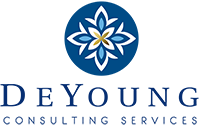You are on vacation and you carefully plan a hike on the National Park Trail System. You choose one of the many paths that result in reaching a summit that rewards your efforts with a spectacular view. Then, on the morning of your trek you hear that one of the sections on the trail you selected was washed out by last night’s rain. But you’re an adventurous soul, so you take the path you mapped out, right? You spent a of time crafting your plan.
Of course you don’t take that path. The sensible option is to revisit that plan to take into consideration the new circumstances.
This is how organizations should think of their strategic plan. You’ve taken the time to craft the plan, it’s given you clarity around goals, and you’ve created benchmarks to know when you’ve reached them. However, the future is never set in stone and your strategic plan will be far more resilient if you anticipate flexing with changing circumstances.
In our years of working in organizations, we so often see that the strategic plan is static, failing to keep up with the times, or worse yet, a relic gathering dust on the shelf, never to see the light of day.
Keeping a strategic plan viable requires both a commitment from leadership and time allotted for maintenance. It should be a living document that allows for adjustment when problems arise, when priorities change, or as new ideas are presented that fit the mission and vision of the organization.
Here are some recommendations for keeping your strategic plan malleable and purposeful:
- Set aside periodic dates for your board of directors or executive committee to review the plan
- As a part of that review, do an organizational “check-up”
- How are we doing?
- What is on the horizon for us – internally or externally?
- What, if anything, has gotten off-track?
- What, if anything, is no longer serving our goals or mission?
- What might we do differently as we move forward?
- Given that checkup, are our goals, objectives and activities still appropriate? Or do we need to find another path to achieve our mission?
The questions above are a great start in your effort to maintain a living strategic plan. Of course, if you would like more help with your strategic planning efforts please contact DeYoung Consulting Services. We have a recommended schedule with a series of specific questions you can use to effectively review your plan, along with a dashboard concept that will help everyone stay on track.
And, if you would like more information on strategic thinking, see my previous blogs: A Volatile World Calls for Flexible Leadership and Proactive vs Reactive Strategic Thinking. Another recommended read is the Harvard Business Review’s The Best Strategic Leaders Balance Agility and Consistency.

